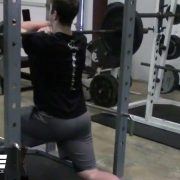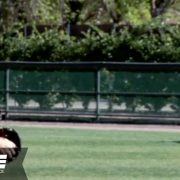Quick Tips to Never Hang a Curveball Again
You’ve got the hitter 0-1 after a sharp first-pitch fastball for a strike. You then break off a nasty 1/7 curveball, and he swings and misses. The hitter is on the ropes and took an ugly swing, so the catcher calls again for the curveball. You nod in agreement, rock, kick and deliver….
…a big, fat hanger.
He blasts it into the gap, and you don’t know what went wrong. The last curveball was a hammer – hard and straight until the last second, at which point it dropped off the table and embarrassed the guy with the bat. But in trying to make the next one even better, you tensed up, tried too hard, and hung it.
This is an all-too-common scenario, especially for young pitchers.
How to Fix Your Curveball During a Game
Some days, a pitcher just doesn’t have it. But no matter how good – or bad – a pitcher’s stuff is on a given day, he has to battle to find, and right the ship before it’s too late. Most days, a pitcher will take the mound with his B or C-grade stuff, and he’ll have to battle and adjust to eek out a win.
Pitching is a game of adjustments. Remember – mechanics are half the battle, and pitchers need to keep a clear mind to let the body do what it knows how to do. Too often, pitchers struggle to locate off-speed pitches because they’re too anxious and nervous about falling behind in the count, failing to execute, or giving up hits.
Relax, pick your spot and execute. Check out the video below for quick adjustments that can be used immediately on the mound!
How to Throw a Hammer Curveball
If you liked this video, be sure to check out coach Dan’s curveball resources:
- How to Throw a Curveball: The Complete Guide
- Photos of the Best Curveball Grips with Explanations
- And, check out his detailed article on how to improve pitching mechanics.
Dan Blewett
Latest posts by Dan Blewett (see all)
- What Causes A Mental Meltdown in Baseball? - September 3, 2019
- Two Common Curveball Mistakes Pitchers Should Avoid - July 30, 2019
- Is Heavy Lifting Good For Pitchers? - July 2, 2019










Sounds good & the breathing piece is good for sure but way too much internal focus when you are trying to make in game location adjustments. For the majority of pitchers who are misfiring the best strategy to make in game location adjustments is to make simple external point of aim adjustments. Keep it simple.
Hey JW – I appreciate the comment. Everyone has different methods, but I don’t think simply adjusting visual aim is the way to get a pitcher back on track. Sometimes it can work, but visual focal points don’t solve everything. I agree about keeping things simple, but when there are controllable mechanical adjustments that can be made, they should be made – pitchers need to be held accountable as athletes. Pitching isn’t just adjusting the sights on the gun barrel, it’s about controlling the body and learning how to feel one’s way through the small release point and mechanical fluctuations that will be there on a daily basis. Visual focal points don’t address or fix all of those. Thanks again for reading.